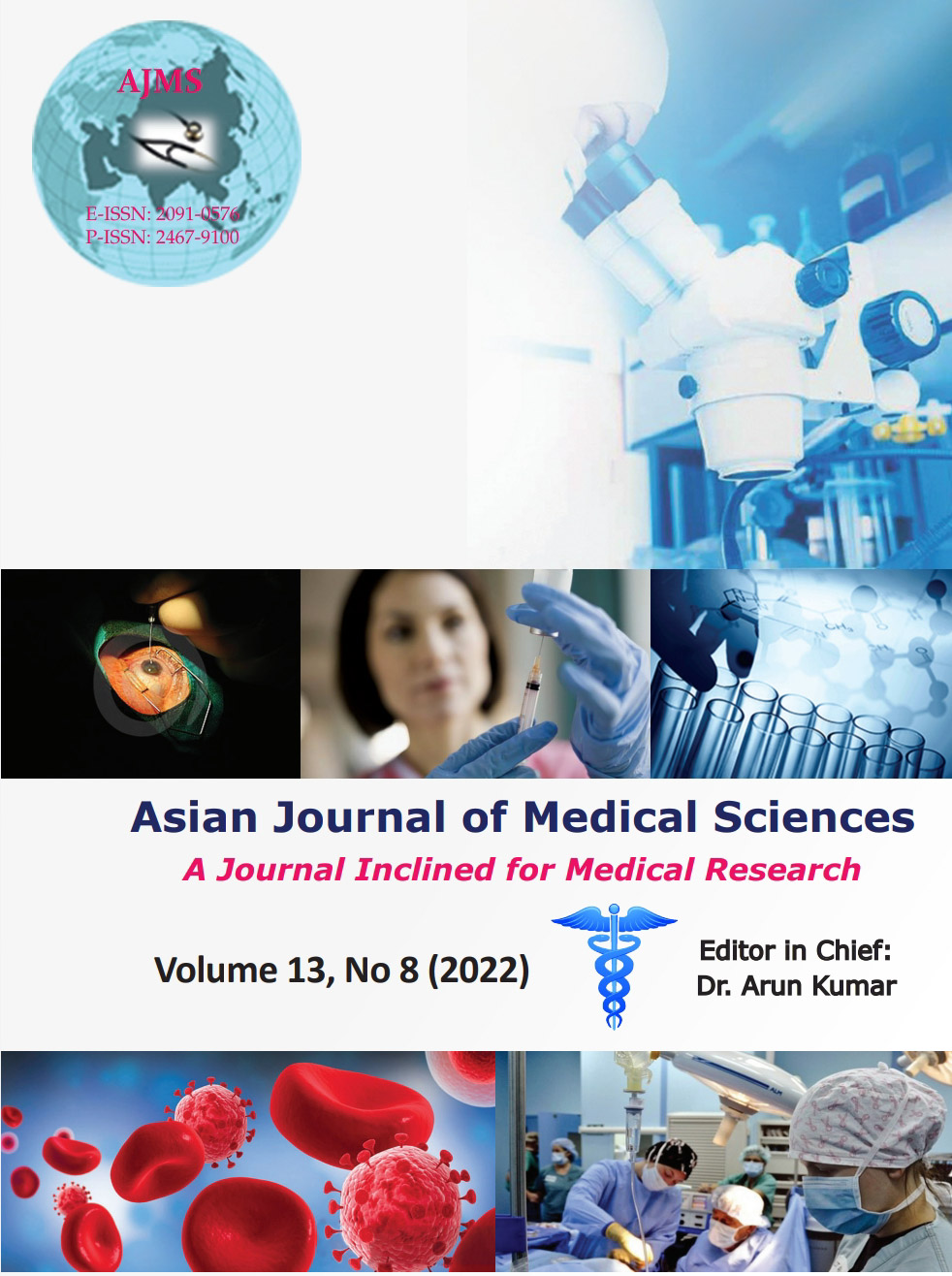Correlation of serum prolactin level to Child-Pugh scoring system and its prognostic significance in cirrhosis of liver
Keywords:
Liver cirrhosis; Serum prolactin; Child-Pugh scoring; Ascites; Esophageal varices; Jaundice; Hepatic encephalopathyAbstract
Background: With the growing incidence of liver cirrhosis among Asians, the use of a biomarker such as prolactin indicates the severity of the disease, its complications, and serves as a tool for the early intervention.
Aims and Objectives: The aims of this study were to assess the correlation of serum prolactin level to the Child-Pugh Scoring System in liver cirrhosis patients and to find out its prognostic importance in liver cirrhosis.
Materials and Methods: This is a cross-sectional study including 60 patients of liver cirrhosis. Complete history taking, physical examination, and relevant investigations were done. Frequency and percentage were calculated and Chi-square test was applied for significance. Correlation was assessed using Spearman’s correlation coefficient.
Results: Mean age was 44±12.8 years. Cirrhosis was alcohol induced in 55%, hepatitis B related in 18.3%, and other causes related in 7.8%. Mean prolactin levels were 18.1±11.3 μg/l. Strong positive correlation was found between prolactin level and bilirubin level (rs=0.372, P=0.003) and prolactin level and prothrombin time (rs=0.490, P=0.003). Statistically significant association was found between Child-Pugh score and prolactin level (x2=12.2, P=0.003). We found no significant association of prolactin level with age, albumin, creatinine, ascites, esophageal varices, etiology of cirrhosis, and hepatic encephalopathy.
Conclusion: We observed that there was a strong correlation between Child-Pugh score and serum prolactin level. Although, Child-Pugh scoring system is a predictor of morbidity in liver cirrhosis patients, serum prolactin level can also be used as an indicator for predicting patients at high risk of developing complications and mortality due to liver cirrhosis.
Downloads
Downloads
Published
How to Cite
Issue
Section
License
Copyright (c) 2022 Asian Journal of Medical Sciences

This work is licensed under a Creative Commons Attribution-NonCommercial 4.0 International License.
Authors who publish with this journal agree to the following terms:
- The journal holds copyright and publishes the work under a Creative Commons CC-BY-NC license that permits use, distribution and reprduction in any medium, provided the original work is properly cited and is not used for commercial purposes. The journal should be recognised as the original publisher of this work.
- Authors are able to enter into separate, additional contractual arrangements for the non-exclusive distribution of the journal's published version of the work (e.g., post it to an institutional repository or publish it in a book), with an acknowledgement of its initial publication in this journal.
- Authors are permitted and encouraged to post their work online (e.g., in institutional repositories or on their website) prior to and during the submission process, as it can lead to productive exchanges, as well as earlier and greater citation of published work (See The Effect of Open Access).




